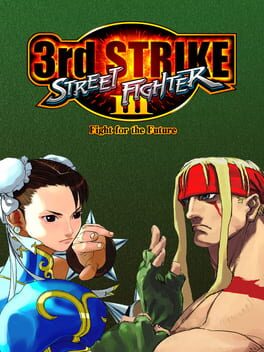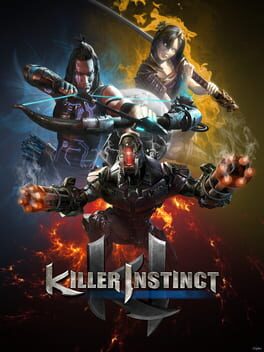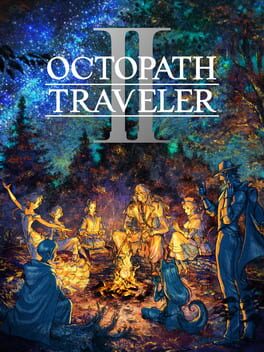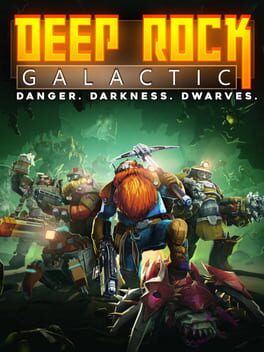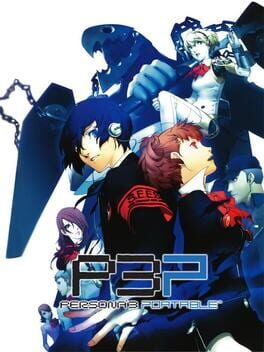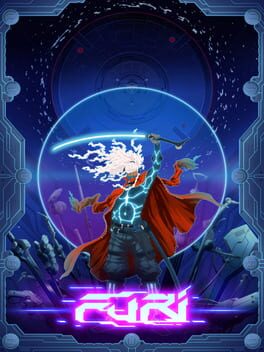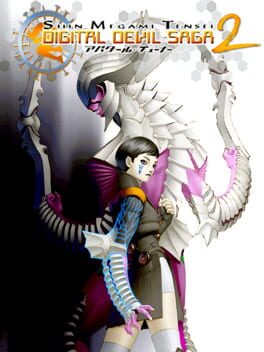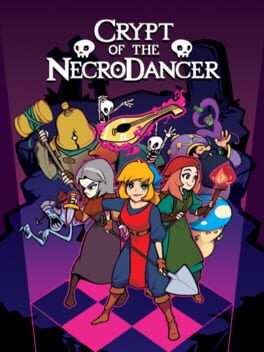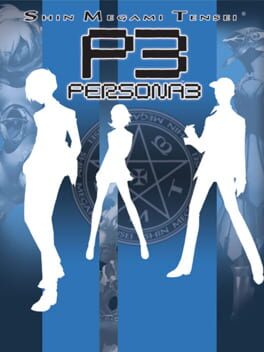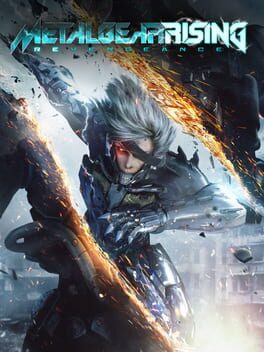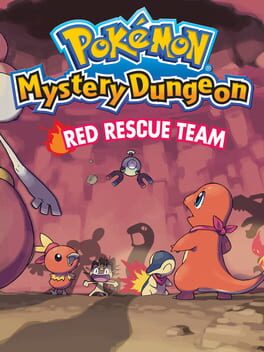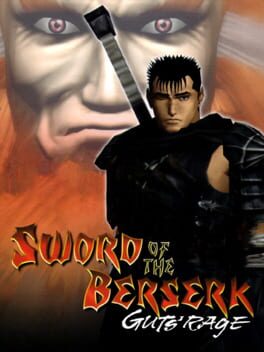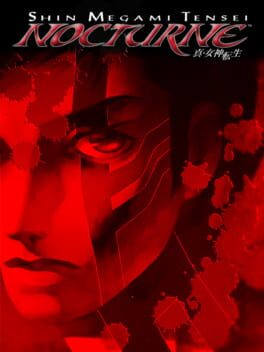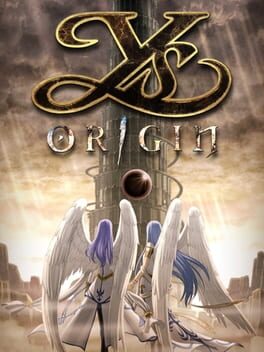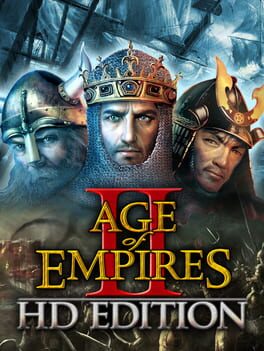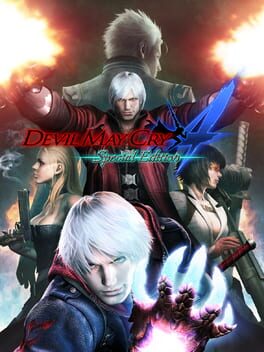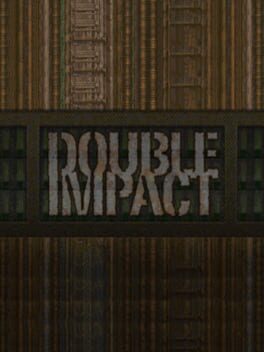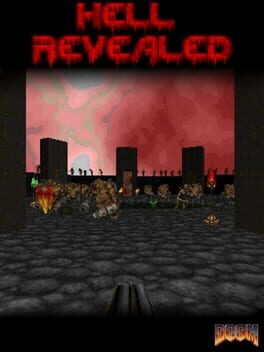ThemboTimbo
318 reviews liked by ThemboTimbo
Wife’s Reaction:
“Did you have fun?You sure swore a lot.”
There’s Sand in my Metroidvania:
You’re often retreading ground in Metroidvanias, and never has the traversal been as fun as it is in the Lost Crown. Finally, we have a new Prince of Persia and it’s a “video game” game. Mount Qaf, the game’s setting, is massive with plenty of intense challenges and secrets for engaged players.
“Did you have fun?You sure swore a lot.”
There’s Sand in my Metroidvania:
You’re often retreading ground in Metroidvanias, and never has the traversal been as fun as it is in the Lost Crown. Finally, we have a new Prince of Persia and it’s a “video game” game. Mount Qaf, the game’s setting, is massive with plenty of intense challenges and secrets for engaged players.
Super Mario Sunshine
2002
Uniquely among the Mario games released prior to Galaxy 2, I have no nostalgia for Super Mario Sunshine.
I wasn't around for its reveal and initial release, and I had no way of playing it as a kid - my first playthrough of Sunshine was in 2015, emulated on a computer that could barely run the game at near-full speed with the audio disabled.
But I really enjoyed my time with the game - far more than I did with the Galaxy games - and I've come back to replay it a handful times since, including this playthrough on the rather unfortunate 3D All-Stars collection.
Sunshine is often treated as the black sheep of the series, a janky, unpolished mess compared to the rest of the games - and especially Galaxy right after it, which vastly surpassed it in its aesthetic and supposed scope.
When I say that it's this game that's actually one of my favorite games in the series, I acknowledge this reputation Sunshine has gathered over the years.
In other words, I don't mean to deny the aspects of Sunshine that are noticeably less well thought-out than the rest of the franchise. Let's go on an obligatory quick roll call: the lilypad stage is near impossible to complete normally, adding insult to injury in how long it takes to get there; the watermelon festival is clumsily designed; the Corona Mountain boat is hard to control; the missions are overall too dependent on Shadow Mario chases and red coins... We've all heard these a million times if we've ever discussed Sunshine on the Internet. Let's move on.
It does beg a few questions, though. Why do people complain so much about the lilypad, the pachinko, the watermelon, and all that while conveniently leaving out the fact that most of Super Mario Sunshine's supposed worst shines are completely optional?
The secret shines found around Delfino Plaza, the two bonus shines per course, the 100-coin shines, and each of the twenty-four shine sprites obtained from trading them in at the boathouse - accounting for 70 of Sunshine's 120 shines - are almost completely inconsequential to the game (at most, they let you unlock courses earlier), and a player could easily complete the game with 50 shines collected from the Airstrip, the first seven missions of each course and Corona Mountain.
It seems all too obvious to suggest to anyone who doesn't enjoy those aspects of Super Mario Sunshine: just leave them be!
100% completion seems like the default in 3D platformers ever since games like Super Mario 64 and Banjo-Kazooie emphasized the collection aspect of the genre, but in a world that's increasingly moving towards acceptance that we will never finish every game, even those we start, I don't see the harm in letting those extra shine sprites go, even if someone could argue that some of them are badly made or designed.
I'm not that someone. For context, I've enjoyed my time 100%ing this game far more than I did with Galaxy, and if I were to go back to a 100% playthrough of either it or Odyssey, I would pick Sunshine in a heartbeat.
I will first briefly give credit to the pachinko and say it gets far more hate than it deserves, and that some of Galaxy and Odyssey's more gimmicky missions are not only more obnoxious, but more drawn-out and exhausting—
With my reputation ruined with that one sentence, allow me to explain.
Super Mario Sunshine's biggest strength that no other Mario game accomplishes except for brief instances of Odyssey is its environmental platforming - how it manages to make each location feel like a genuinely believable place within Isle Delfino.
Ricco Harbor and Pinna Park are some of my favorite levels in the entirety of the Mario series in how they manage to naturally bring out Mario's platforming while making everything look like it exists for a purpose beyond being there for Mario to jump on.
While bigger than most Mario maps except some of Odyssey's larger Kingdoms, the courses generally do a good job in dividing themselves into smaller sections within a cohesive map (albeit Pinna Park might go about doing this in a somewhat ham-fisted way), where individual missions can focus on one or two of them each.
One issue I had with Super Mario Odyssey's level design was how too many of them felt like floating landmasses over a bottomless pit: twelve out of fifteen of its main kingdoms followed this design to some capacity, with only the Wooded, Lost and Luncheon Kingdoms really providing an interesting twist on this idea. Sunshine almost completely avoids this issue, with Pianta Village being the single place being designed this way. In exchange, Sunshine often uses its verticality as consequences for failing platforming challenges, with conveniences like tightropes and the Rocket Nozzle being placed to ensure players never lose too much progress for falling down - it also often ensures that players won't suffer from too much fall damage by placing water around the map, which ties into the aesthetic of the game quite brilliantly.
Speaking of aesthetic - I wouldn't give Sunshine's environmental design as much praise if it weren't for their overarching nature: there's a lot of detail put in to make it feel like (almost) everything exists within the same landmass, like how you can see Ricco Harbor from Bianco Hills. There hasn't been this much cohesion in a Mario game since Super Mario World, (another game that debatably suffered for it compared to Super Mario Bros. 3's diversity in locales) and it really goes a long way to sell the idea that Isle Delfino is a living, breathing place compared to the abstract, bizzare themes later found in Super Mario Galaxy that attempt to separate its environments as far apart as it can.
It's because it feels like a living place that I feel incentivized to explore the courses and comb every part of the island for coins, both blue and yellow - less because I'm expecting a reward like in the other Mario games, and more because it lets me live out an inherent feeling of exploration that I couldn't really have when I'd go on holidays as a kid and have my hand held the entire time, the feeling that Mario games seem to have a complicated relationship with.
It's because it feels like a living place that I can forgive the wacky Delfino people from having weird customs like the watermelon festival, blooper races; that I don't mind the fact that Mario's being scammed into helping the Sirena Beach hotel, that everything really is a little bit jank, but maybe it's fine...
Because that's how things are meant to be in Isle Delfino.
So in Rome, I'll do what the Romans do,
and enjoy it all.
I wasn't around for its reveal and initial release, and I had no way of playing it as a kid - my first playthrough of Sunshine was in 2015, emulated on a computer that could barely run the game at near-full speed with the audio disabled.
But I really enjoyed my time with the game - far more than I did with the Galaxy games - and I've come back to replay it a handful times since, including this playthrough on the rather unfortunate 3D All-Stars collection.
Sunshine is often treated as the black sheep of the series, a janky, unpolished mess compared to the rest of the games - and especially Galaxy right after it, which vastly surpassed it in its aesthetic and supposed scope.
When I say that it's this game that's actually one of my favorite games in the series, I acknowledge this reputation Sunshine has gathered over the years.
In other words, I don't mean to deny the aspects of Sunshine that are noticeably less well thought-out than the rest of the franchise. Let's go on an obligatory quick roll call: the lilypad stage is near impossible to complete normally, adding insult to injury in how long it takes to get there; the watermelon festival is clumsily designed; the Corona Mountain boat is hard to control; the missions are overall too dependent on Shadow Mario chases and red coins... We've all heard these a million times if we've ever discussed Sunshine on the Internet. Let's move on.
It does beg a few questions, though. Why do people complain so much about the lilypad, the pachinko, the watermelon, and all that while conveniently leaving out the fact that most of Super Mario Sunshine's supposed worst shines are completely optional?
The secret shines found around Delfino Plaza, the two bonus shines per course, the 100-coin shines, and each of the twenty-four shine sprites obtained from trading them in at the boathouse - accounting for 70 of Sunshine's 120 shines - are almost completely inconsequential to the game (at most, they let you unlock courses earlier), and a player could easily complete the game with 50 shines collected from the Airstrip, the first seven missions of each course and Corona Mountain.
It seems all too obvious to suggest to anyone who doesn't enjoy those aspects of Super Mario Sunshine: just leave them be!
100% completion seems like the default in 3D platformers ever since games like Super Mario 64 and Banjo-Kazooie emphasized the collection aspect of the genre, but in a world that's increasingly moving towards acceptance that we will never finish every game, even those we start, I don't see the harm in letting those extra shine sprites go, even if someone could argue that some of them are badly made or designed.
I'm not that someone. For context, I've enjoyed my time 100%ing this game far more than I did with Galaxy, and if I were to go back to a 100% playthrough of either it or Odyssey, I would pick Sunshine in a heartbeat.
I will first briefly give credit to the pachinko and say it gets far more hate than it deserves, and that some of Galaxy and Odyssey's more gimmicky missions are not only more obnoxious, but more drawn-out and exhausting—
With my reputation ruined with that one sentence, allow me to explain.
Super Mario Sunshine's biggest strength that no other Mario game accomplishes except for brief instances of Odyssey is its environmental platforming - how it manages to make each location feel like a genuinely believable place within Isle Delfino.
Ricco Harbor and Pinna Park are some of my favorite levels in the entirety of the Mario series in how they manage to naturally bring out Mario's platforming while making everything look like it exists for a purpose beyond being there for Mario to jump on.
While bigger than most Mario maps except some of Odyssey's larger Kingdoms, the courses generally do a good job in dividing themselves into smaller sections within a cohesive map (albeit Pinna Park might go about doing this in a somewhat ham-fisted way), where individual missions can focus on one or two of them each.
One issue I had with Super Mario Odyssey's level design was how too many of them felt like floating landmasses over a bottomless pit: twelve out of fifteen of its main kingdoms followed this design to some capacity, with only the Wooded, Lost and Luncheon Kingdoms really providing an interesting twist on this idea. Sunshine almost completely avoids this issue, with Pianta Village being the single place being designed this way. In exchange, Sunshine often uses its verticality as consequences for failing platforming challenges, with conveniences like tightropes and the Rocket Nozzle being placed to ensure players never lose too much progress for falling down - it also often ensures that players won't suffer from too much fall damage by placing water around the map, which ties into the aesthetic of the game quite brilliantly.
Speaking of aesthetic - I wouldn't give Sunshine's environmental design as much praise if it weren't for their overarching nature: there's a lot of detail put in to make it feel like (almost) everything exists within the same landmass, like how you can see Ricco Harbor from Bianco Hills. There hasn't been this much cohesion in a Mario game since Super Mario World, (another game that debatably suffered for it compared to Super Mario Bros. 3's diversity in locales) and it really goes a long way to sell the idea that Isle Delfino is a living, breathing place compared to the abstract, bizzare themes later found in Super Mario Galaxy that attempt to separate its environments as far apart as it can.
It's because it feels like a living place that I feel incentivized to explore the courses and comb every part of the island for coins, both blue and yellow - less because I'm expecting a reward like in the other Mario games, and more because it lets me live out an inherent feeling of exploration that I couldn't really have when I'd go on holidays as a kid and have my hand held the entire time, the feeling that Mario games seem to have a complicated relationship with.
It's because it feels like a living place that I can forgive the wacky Delfino people from having weird customs like the watermelon festival, blooper races; that I don't mind the fact that Mario's being scammed into helping the Sirena Beach hotel, that everything really is a little bit jank, but maybe it's fine...
Because that's how things are meant to be in Isle Delfino.
So in Rome, I'll do what the Romans do,
and enjoy it all.
Genuinely the best feeling 3D platformer I've played innnnnn gotta be at least 5 years. It's, just, pouring out the seams with charm and earnest love, to the point where the polish feels homemade with its partly-crusty lining. Sometimes for woe though, of course, like when the geometry can ~occasionally~ disagree with your particular momentum and existence. Otherwise it feels as clean as it should be!
It has the makings of doing the Super Mario Odyssey flowchart of hat-tricking, but with detours and digressions from that linear track, encouraged both for score and conserving momentum. Sonic but not-quite-Sonic sprinklings on top, and that all flows together phenomenally. What's altogether more stunning though is it's the only work of its ilk that bothers to really have "level design." There's real guidance through its stages in a way that lets you go absolutely hogwild with its toolkit without ever being 'too open' or 'too constrained.' You can reasonably skip as much as you'd like to by mastering the speed of yo-yo tricks well enough, but there's always some things you Need to do. It's so super encouraging of going for the One-Combo 100% run through its stages, to the point where I actually went and did a few. I can't say a game like this has done that to me! It helps that the music is so bouncy and blissful, and stages never outstay their welcome to where the prospect of "you need to do this entire stage again" is a "absolutely hun let's do even better this time".
My only ~real~ issue is that the swinging and twirling, sadly, lacks enough bite, at least for me. I don't think there's a single stage or moment where the game challenged me, and this is AFTER doing every bonus stage. Sure I can do the one-combos and those can be difficult but with all the skips it's only really as hard as I let it be? Even though it's not uncharacteristic for such a clearly soft platformer, I find myself so unsatisfied with the lengths the game really went to, especially when the final boss was more of a wet fart than a real demonstration of the game's skills, or like, your performance as an artist!!! Give it an encore! A real spicy star road!
It has the makings of doing the Super Mario Odyssey flowchart of hat-tricking, but with detours and digressions from that linear track, encouraged both for score and conserving momentum. Sonic but not-quite-Sonic sprinklings on top, and that all flows together phenomenally. What's altogether more stunning though is it's the only work of its ilk that bothers to really have "level design." There's real guidance through its stages in a way that lets you go absolutely hogwild with its toolkit without ever being 'too open' or 'too constrained.' You can reasonably skip as much as you'd like to by mastering the speed of yo-yo tricks well enough, but there's always some things you Need to do. It's so super encouraging of going for the One-Combo 100% run through its stages, to the point where I actually went and did a few. I can't say a game like this has done that to me! It helps that the music is so bouncy and blissful, and stages never outstay their welcome to where the prospect of "you need to do this entire stage again" is a "absolutely hun let's do even better this time".
My only ~real~ issue is that the swinging and twirling, sadly, lacks enough bite, at least for me. I don't think there's a single stage or moment where the game challenged me, and this is AFTER doing every bonus stage. Sure I can do the one-combos and those can be difficult but with all the skips it's only really as hard as I let it be? Even though it's not uncharacteristic for such a clearly soft platformer, I find myself so unsatisfied with the lengths the game really went to, especially when the final boss was more of a wet fart than a real demonstration of the game's skills, or like, your performance as an artist!!! Give it an encore! A real spicy star road!
Killer Instinct
2013
Potentially the most well thought out and accessible fighting game I've ever played with one of the most bat shit insane and varied cast of characters I've seen. Seriously, think of a gripe you have with a lot of fighting game mechanics, chances are Killer Instinct has a very intuitive solution for it.
Things people still beg fighting game developers to implement is stuff this game has been rocking since 2013 and is still ahead of the curve with its net code and some genuinely revolutionary things that it has such as the Shadow Labs (Extremely deep AI learning tool to fight data versions of other players offline that's scarily accurate and organic).
Many people shit on the corny visuals and all that, but all of that's just superficial. Beyond that lies a game that manages to be both simple and intricate simultaneously. The combo breaker mechanic is a genius idea that keeps you on your toes for both the person in advantage, and the person eating an eternal mix up that always makes every match feel extremely different with the sheer variety of mind games and general things you can do with it.
"Should I risk everything and use predictable moves to bait out a breaker? What if I bluff and scare them into doing nothing since they'll think I'll use a counter breaker?"
"Should I go for safer moves but miss out big damage?" etc etc
The scenarios write themselves.
Some newer players write it off as no execution mashing or just being lucky if you guess right and break away from a combo, but that's a severe misunderstanding of how it works. There's 100% execution beyond a certain point that keeps the combo system tense due to some really punishing requirements, some being as tricky as just frame moves (Having only 1 frame to execute a move). As for it being luck based, it really isn't, you can be punished extremely badly if you just mash breakers without thinking, like literally losing an entire life bar levels of damage.
Now I'm gonna just gush about the game instead of defending it from the most common complaints I see.
The cast is so much fucking fun, its gimmicky bullshit galore but in a way that doesn't feel unfun to go against. There's a character that functions like a tag fighter in a 1v1 format with assists and multiple character's health bars to manage for example, shit can get nuts. Or another character that's a weird ass fucking RNG Frakenstein that can completely change gameplans and approach at any given moment and has to bash their head like a dumbass to be able to make the RNG more in their favor at the cost of damaging themselves.
I'm not the greatest player and I'm still a bright eyed puppy compared to all the people still actively playing this but it still manages to be rewarding nonetheless, even when I get the floor wiped with me. The game holds your hand pretty well and tells you very explicitly what you did wrong, such as timing things wrong, etc. You always feel like you learn something new in a match.
Even outside the fun as hell combo system, the normal moment to moment gameplay is fucking awesome and you never feel like you've quite won yet with how easy it is to lose all momentum you have going for yourself, making every match feel like a genuine battle of wits with how intelligently thought out every mechanic is. You can never really steam roll anyone in this game consistently even when you have an entire life bar on them with how easy it is to eat shit off your short comings.
The music too is fucking great, it's some of the hypest and most visceral shit to me with how it dynamically changes off the intensity and actions of what's going on and even has a weird rhythm game-esque element to it at times. It honestly makes me excited every time when absolute banger parts of songs start playing when shit gets really clutch or neck and neck.
To go on another tangent, I absolutely dig the stupid bombastic presentation this game has. It feels like a parody of fighting games with how melodramatic and in your face it is. The characters are a weird mish mash of a child's monster action figures with how shamelessly tropey they are. Not for everyone, and people who prioritize aesthetics in a fighting game rightfully wrote this off, but I love it, this is seriously one of the funniest games to me.
You know how sitcoms or shows in general tend to have fake in universe video games that are really stupid and juvenile? That's basically what Killer Instinct is in that regard.
Yeah, you can probably tell I like Killer Instinct a lot. It's quickly become one of my favorite fighting games and might potentially be my favorite in general the more I let it sit, at least for 2D ones.
Things people still beg fighting game developers to implement is stuff this game has been rocking since 2013 and is still ahead of the curve with its net code and some genuinely revolutionary things that it has such as the Shadow Labs (Extremely deep AI learning tool to fight data versions of other players offline that's scarily accurate and organic).
Many people shit on the corny visuals and all that, but all of that's just superficial. Beyond that lies a game that manages to be both simple and intricate simultaneously. The combo breaker mechanic is a genius idea that keeps you on your toes for both the person in advantage, and the person eating an eternal mix up that always makes every match feel extremely different with the sheer variety of mind games and general things you can do with it.
"Should I risk everything and use predictable moves to bait out a breaker? What if I bluff and scare them into doing nothing since they'll think I'll use a counter breaker?"
"Should I go for safer moves but miss out big damage?" etc etc
The scenarios write themselves.
Some newer players write it off as no execution mashing or just being lucky if you guess right and break away from a combo, but that's a severe misunderstanding of how it works. There's 100% execution beyond a certain point that keeps the combo system tense due to some really punishing requirements, some being as tricky as just frame moves (Having only 1 frame to execute a move). As for it being luck based, it really isn't, you can be punished extremely badly if you just mash breakers without thinking, like literally losing an entire life bar levels of damage.
Now I'm gonna just gush about the game instead of defending it from the most common complaints I see.
The cast is so much fucking fun, its gimmicky bullshit galore but in a way that doesn't feel unfun to go against. There's a character that functions like a tag fighter in a 1v1 format with assists and multiple character's health bars to manage for example, shit can get nuts. Or another character that's a weird ass fucking RNG Frakenstein that can completely change gameplans and approach at any given moment and has to bash their head like a dumbass to be able to make the RNG more in their favor at the cost of damaging themselves.
I'm not the greatest player and I'm still a bright eyed puppy compared to all the people still actively playing this but it still manages to be rewarding nonetheless, even when I get the floor wiped with me. The game holds your hand pretty well and tells you very explicitly what you did wrong, such as timing things wrong, etc. You always feel like you learn something new in a match.
Even outside the fun as hell combo system, the normal moment to moment gameplay is fucking awesome and you never feel like you've quite won yet with how easy it is to lose all momentum you have going for yourself, making every match feel like a genuine battle of wits with how intelligently thought out every mechanic is. You can never really steam roll anyone in this game consistently even when you have an entire life bar on them with how easy it is to eat shit off your short comings.
The music too is fucking great, it's some of the hypest and most visceral shit to me with how it dynamically changes off the intensity and actions of what's going on and even has a weird rhythm game-esque element to it at times. It honestly makes me excited every time when absolute banger parts of songs start playing when shit gets really clutch or neck and neck.
To go on another tangent, I absolutely dig the stupid bombastic presentation this game has. It feels like a parody of fighting games with how melodramatic and in your face it is. The characters are a weird mish mash of a child's monster action figures with how shamelessly tropey they are. Not for everyone, and people who prioritize aesthetics in a fighting game rightfully wrote this off, but I love it, this is seriously one of the funniest games to me.
You know how sitcoms or shows in general tend to have fake in universe video games that are really stupid and juvenile? That's basically what Killer Instinct is in that regard.
Yeah, you can probably tell I like Killer Instinct a lot. It's quickly become one of my favorite fighting games and might potentially be my favorite in general the more I let it sit, at least for 2D ones.
If Gravity Circuit is an example of a game "not understanding the inner workings of the many things it's inspired by", then Penny's Big Breakaway is the exact opposite. If anything, this game feels like something made by game designers first, and everything else second.
This is to say: Penny's moment to moment gameplay is really good. It's an incredibly smart game from start to finish. Penny herself is up there in the list of "best controlling platforming characters." There existing an actual learning curve to effectively using the Yoyo tricks to keep your flow is shows to me that Evening Star understands the secret sauce of other high skill ceiling platformers. The combo system and focus on score attack mechanics does wonders for this game's level design and dramatically increases the depth of sections I typically would not have a second thought about. "How do I get through this efficiently?", "Should I risk getting hit and dropping my multiplier here?", etc. There's tons of performers in Penny's (being the game's theme) and you, the player, are one too. The developers ask you to step into the spotlight: "can you show us that you've got it down?"
It's funny to hear the mixed reception of this game's controls in more critical spaces online, because all the people I've seen who stuck with it ended up appreciating how Penny's plays by the end.
Almost as if game design that pushes the player to get better can be rewarding, or something...
Now, I won't boil down all (only some) of the complaints about this game into a simple "skill issue"-- it's clearly more complicated than that. The bugs, for example, are not really a complaint that can be argued against. I think some exaggerate how often and intrusive the glitches really are, but there's definitely some jank in this game. It feels bad to lose your high combo due to a physics inconsistency. I also think Penny's suffers from "bad boss fight" disease-- strange for a game that seemingly understands platformers can be satisfying without them. It especially hurts to end the game on such a "blah" note of the final boss which captures exactly none of the aspects that make the levels so fun.
Out of all the complaints I'm the most sympathetic to, though, it has to be what I've seen about the presentation. Don't get me wrong-- it's not bad at all. There's some truly good tracks and area design in this game. Tee Lopes in particular pops off for the level themes in this game. I like that guy. But I don't know, man. If Penny's has the secret sauce in regards to its level design and moment to moment gameplay, I don't think it does in regards to its presentation. I wasn't ever really enraptured with the world of Macaroon like I was with the technically amazing game design. I still like Penny (the girlie) though. She's cool, even if she does have grandma hair.
Still, Penny is a great game. It genuinely makes the shot for one of the best 3D platformers I have ever played, and if Evening Star can make something this impressive when left to their own devices I greatly anticipate whatever it is they make next. There's clearly some real talent here.
This is to say: Penny's moment to moment gameplay is really good. It's an incredibly smart game from start to finish. Penny herself is up there in the list of "best controlling platforming characters." There existing an actual learning curve to effectively using the Yoyo tricks to keep your flow is shows to me that Evening Star understands the secret sauce of other high skill ceiling platformers. The combo system and focus on score attack mechanics does wonders for this game's level design and dramatically increases the depth of sections I typically would not have a second thought about. "How do I get through this efficiently?", "Should I risk getting hit and dropping my multiplier here?", etc. There's tons of performers in Penny's (being the game's theme) and you, the player, are one too. The developers ask you to step into the spotlight: "can you show us that you've got it down?"
It's funny to hear the mixed reception of this game's controls in more critical spaces online, because all the people I've seen who stuck with it ended up appreciating how Penny's plays by the end.
Almost as if game design that pushes the player to get better can be rewarding, or something...
Now, I won't boil down all (only some) of the complaints about this game into a simple "skill issue"-- it's clearly more complicated than that. The bugs, for example, are not really a complaint that can be argued against. I think some exaggerate how often and intrusive the glitches really are, but there's definitely some jank in this game. It feels bad to lose your high combo due to a physics inconsistency. I also think Penny's suffers from "bad boss fight" disease-- strange for a game that seemingly understands platformers can be satisfying without them. It especially hurts to end the game on such a "blah" note of the final boss which captures exactly none of the aspects that make the levels so fun.
Out of all the complaints I'm the most sympathetic to, though, it has to be what I've seen about the presentation. Don't get me wrong-- it's not bad at all. There's some truly good tracks and area design in this game. Tee Lopes in particular pops off for the level themes in this game. I like that guy. But I don't know, man. If Penny's has the secret sauce in regards to its level design and moment to moment gameplay, I don't think it does in regards to its presentation. I wasn't ever really enraptured with the world of Macaroon like I was with the technically amazing game design. I still like Penny (the girlie) though. She's cool, even if she does have grandma hair.
Still, Penny is a great game. It genuinely makes the shot for one of the best 3D platformers I have ever played, and if Evening Star can make something this impressive when left to their own devices I greatly anticipate whatever it is they make next. There's clearly some real talent here.
Octopath Traveler II
2023
Something this singularly focused and confident in what it’s setting out to achieve goes beyond a breath of fresh air and into the realm of interactive mouthwash. Nearly everything about Penny’s game encourages you to stay on the move at all times – it’s present in how the secret areas’ entryways outright throw you in or out, its main enemy type’s mode of attack being chasing you, her bouncy bunny-like outfit and the combo system rewarding you for every trick you pull, and it knows what a joy it is to do so to the point that its main collectibles reward with you with progressively zanier layouts to test your mastery of it in.
It all hinges on building and maintaining momentum, so it’s just as well that her toolkit feeds into both so intuitively. Comparisons to different platformers in this respect are easy – I got enough mileage out of her drop dash equivalent that I occasionally forgot she also has a spin dash one – but viewing this game through the lens of others is selling it short when her yo-yo swing’s the type of thing which makes returning to them initially feel weird for the lack of it. It’s so malleable it’s unreal: an on-demand boost whose strength’s proportional to her speed going into it, contextualised into her design, which can mantle up ledges or grab special items or correct jumps, all dependent on the angle at which you let go and the nearby geometry. Rarely will any two attempts at the same section of a level pan out the same way because of it alone, and that’s without delving into how fluidly almost all of her other manoeuvres interweave with it and what a complementary fit they are for stages so littered with half-pipes and slopes. By no means am I a capital P Penny gamer as of yet, but hopefully this shows what I mean to some degree.
I say “almost” for the same reason as the “nearly” at the start, because although it’s a resounding success at funnelling you into a flow state the vast majority of the time, one or two common interactions stand out as uncharacteristically finicky. The window for maintaining a combo when transitioning from a yo-yo swing into spinning on top of screws feels excessively strict, slightly marring how much I’m predisposed to love any control scheme which even vaguely reminds me of Ape Escape, while obstacles which require Penny to come to a stop (like tree catapults or giant drawers) seem incongruent with how you otherwise pretty much always want to be moving. I’m hesitant to criticise these aspects too much because all manner of unconventional games, not just skill-intensive ones like Penny’s, suffer too often from players’ tendencies to blame them for their own lack of willingness to meet them on their own terms, and knowing that levels can be beat in a single combo makes me think the relative discomfort of these moments is my own fault. Occasional collision issues and/or clipping through terrain are more unambiguously annoying, but in any case, stuff like this is only so conspicuous because everything else about how it plays is so bang on.
That’s similarly true of its levels themselves. While it’s a bit of a pity that the amount of levels per area vary so steeply – Industria and Tideswell, my two favourites in part for the Dynamite-Headdy-if-he-real visuals and being yet further evidence for why Tee Lopes should be made to compose every game ever, only have two levels each – any pacing issues this could’ve potentially resulted in are offset by what a smooth difficulty curve they result in when taken wholistically. The progression from early hazards like water, which can be manipulated to the player’s advantage via the point bonuses it offers by riding on top of it with enough speed, to the absolutely no-touchy electrical discharges powered by breakable lightbulbs in later areas creates this lovely feeling of the game taking its gloves off just as you’ve become acclimatised enough with its systems to no longer need the help. I initially found it frustrating that hazards like the latter hurt Penny if her yo-yo collides with them, but after sitting on it, I can now see that it’s just another example of what a unique platformer this is – substantially extending her hurtbox whenever you perform a trick causes you to really consider when and where to do so in a way that many others don’t really demand of you.
It's evocative of a larger point, which is that Penny’s Big Breakaway is the type of game we could all do with more of. It’s one that’s not afraid to be so out-there in both mechanics and visual design to the point of potentially being offputting for some. It’s one which tangibly takes enough inspiration from the like of Sonic or Mario Odyssey to feel immediately familiar on some level, yet also puts equally as much of its own spin on areas in which it shares common ground with bigger names to the extent that you can’t treat it like them. It’s one that’s in general so unabashedly itself that you can’t not respect it regardless of whether or not it’s to your personal taste, but if you’re at all into the kind of game which gives out as much as you put in and only becomes better as you yourself do, there’s too much on offer here executed to too high of a standard for it not to be.
To extend to it the highest praise in a more succinct way: in art direction, ethos and gameplay philosophy, this is essentially a fully 3D Mega Drive game. Breakaway indeed.
It all hinges on building and maintaining momentum, so it’s just as well that her toolkit feeds into both so intuitively. Comparisons to different platformers in this respect are easy – I got enough mileage out of her drop dash equivalent that I occasionally forgot she also has a spin dash one – but viewing this game through the lens of others is selling it short when her yo-yo swing’s the type of thing which makes returning to them initially feel weird for the lack of it. It’s so malleable it’s unreal: an on-demand boost whose strength’s proportional to her speed going into it, contextualised into her design, which can mantle up ledges or grab special items or correct jumps, all dependent on the angle at which you let go and the nearby geometry. Rarely will any two attempts at the same section of a level pan out the same way because of it alone, and that’s without delving into how fluidly almost all of her other manoeuvres interweave with it and what a complementary fit they are for stages so littered with half-pipes and slopes. By no means am I a capital P Penny gamer as of yet, but hopefully this shows what I mean to some degree.
I say “almost” for the same reason as the “nearly” at the start, because although it’s a resounding success at funnelling you into a flow state the vast majority of the time, one or two common interactions stand out as uncharacteristically finicky. The window for maintaining a combo when transitioning from a yo-yo swing into spinning on top of screws feels excessively strict, slightly marring how much I’m predisposed to love any control scheme which even vaguely reminds me of Ape Escape, while obstacles which require Penny to come to a stop (like tree catapults or giant drawers) seem incongruent with how you otherwise pretty much always want to be moving. I’m hesitant to criticise these aspects too much because all manner of unconventional games, not just skill-intensive ones like Penny’s, suffer too often from players’ tendencies to blame them for their own lack of willingness to meet them on their own terms, and knowing that levels can be beat in a single combo makes me think the relative discomfort of these moments is my own fault. Occasional collision issues and/or clipping through terrain are more unambiguously annoying, but in any case, stuff like this is only so conspicuous because everything else about how it plays is so bang on.
That’s similarly true of its levels themselves. While it’s a bit of a pity that the amount of levels per area vary so steeply – Industria and Tideswell, my two favourites in part for the Dynamite-Headdy-if-he-real visuals and being yet further evidence for why Tee Lopes should be made to compose every game ever, only have two levels each – any pacing issues this could’ve potentially resulted in are offset by what a smooth difficulty curve they result in when taken wholistically. The progression from early hazards like water, which can be manipulated to the player’s advantage via the point bonuses it offers by riding on top of it with enough speed, to the absolutely no-touchy electrical discharges powered by breakable lightbulbs in later areas creates this lovely feeling of the game taking its gloves off just as you’ve become acclimatised enough with its systems to no longer need the help. I initially found it frustrating that hazards like the latter hurt Penny if her yo-yo collides with them, but after sitting on it, I can now see that it’s just another example of what a unique platformer this is – substantially extending her hurtbox whenever you perform a trick causes you to really consider when and where to do so in a way that many others don’t really demand of you.
It's evocative of a larger point, which is that Penny’s Big Breakaway is the type of game we could all do with more of. It’s one that’s not afraid to be so out-there in both mechanics and visual design to the point of potentially being offputting for some. It’s one which tangibly takes enough inspiration from the like of Sonic or Mario Odyssey to feel immediately familiar on some level, yet also puts equally as much of its own spin on areas in which it shares common ground with bigger names to the extent that you can’t treat it like them. It’s one that’s in general so unabashedly itself that you can’t not respect it regardless of whether or not it’s to your personal taste, but if you’re at all into the kind of game which gives out as much as you put in and only becomes better as you yourself do, there’s too much on offer here executed to too high of a standard for it not to be.
To extend to it the highest praise in a more succinct way: in art direction, ethos and gameplay philosophy, this is essentially a fully 3D Mega Drive game. Breakaway indeed.
Deep Rock Galactic
2018
Left 4 Dead 2
2009
everyone's in a rush to pump out a social game with live service elements these days so you can bro down with your best friends but not one person has considered the social value of something like left 4 dead 2: blitz through two or three campaigns, spend half of one campaign trying to fuck each other over out of boredom, then spend the next half of the session chatting shit about feelings, opinions, and the state of our lives in the saferoom

